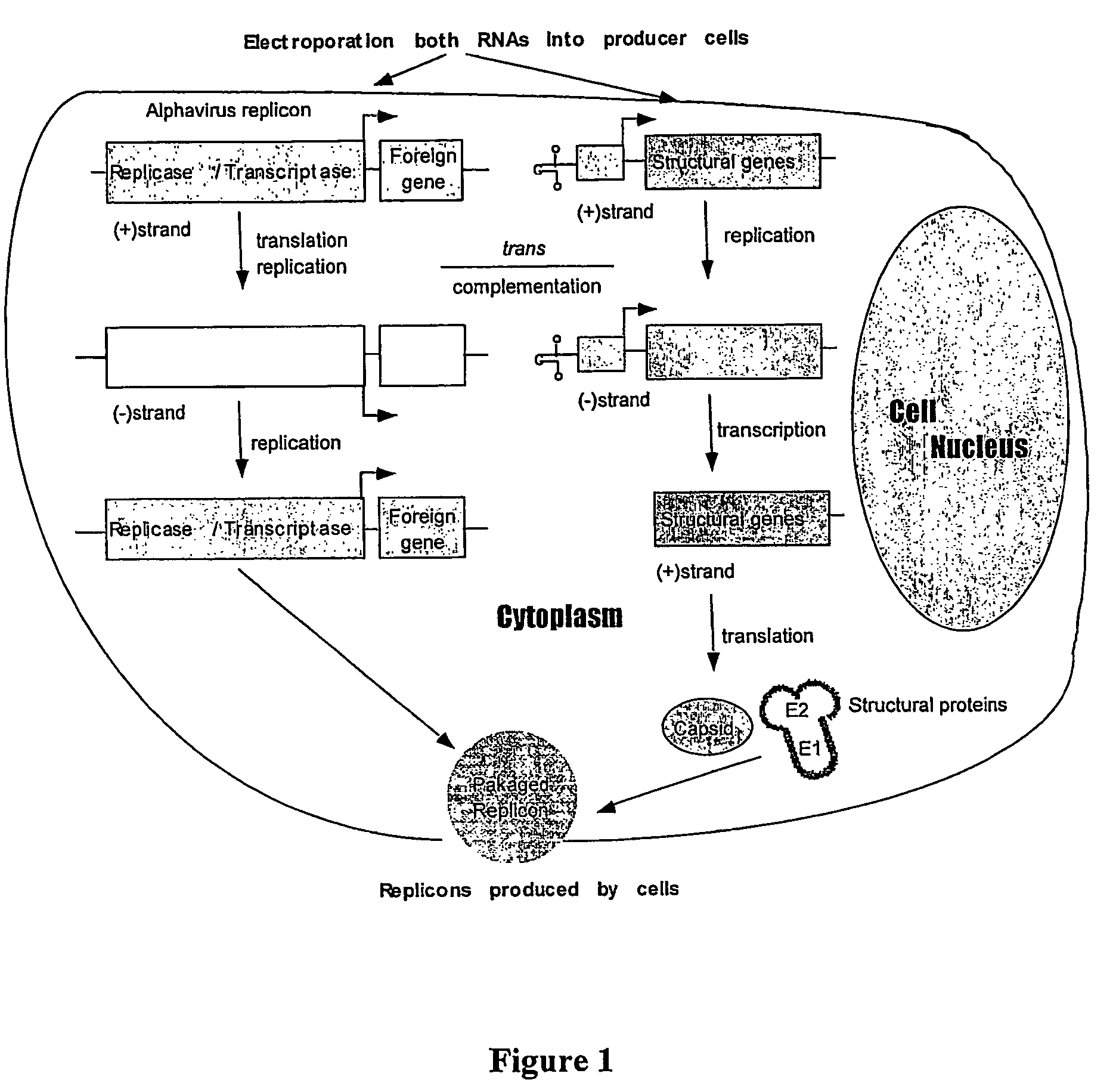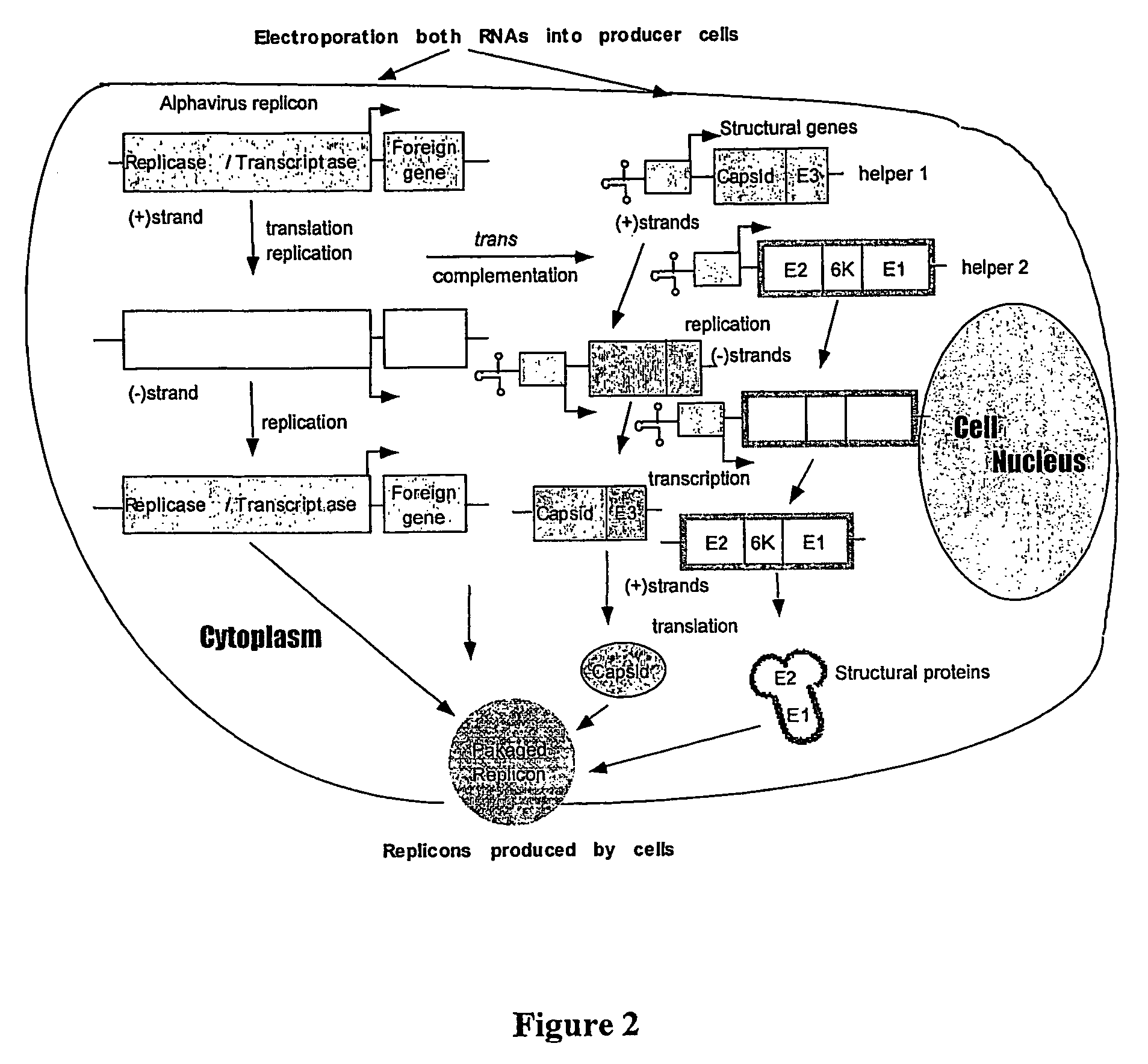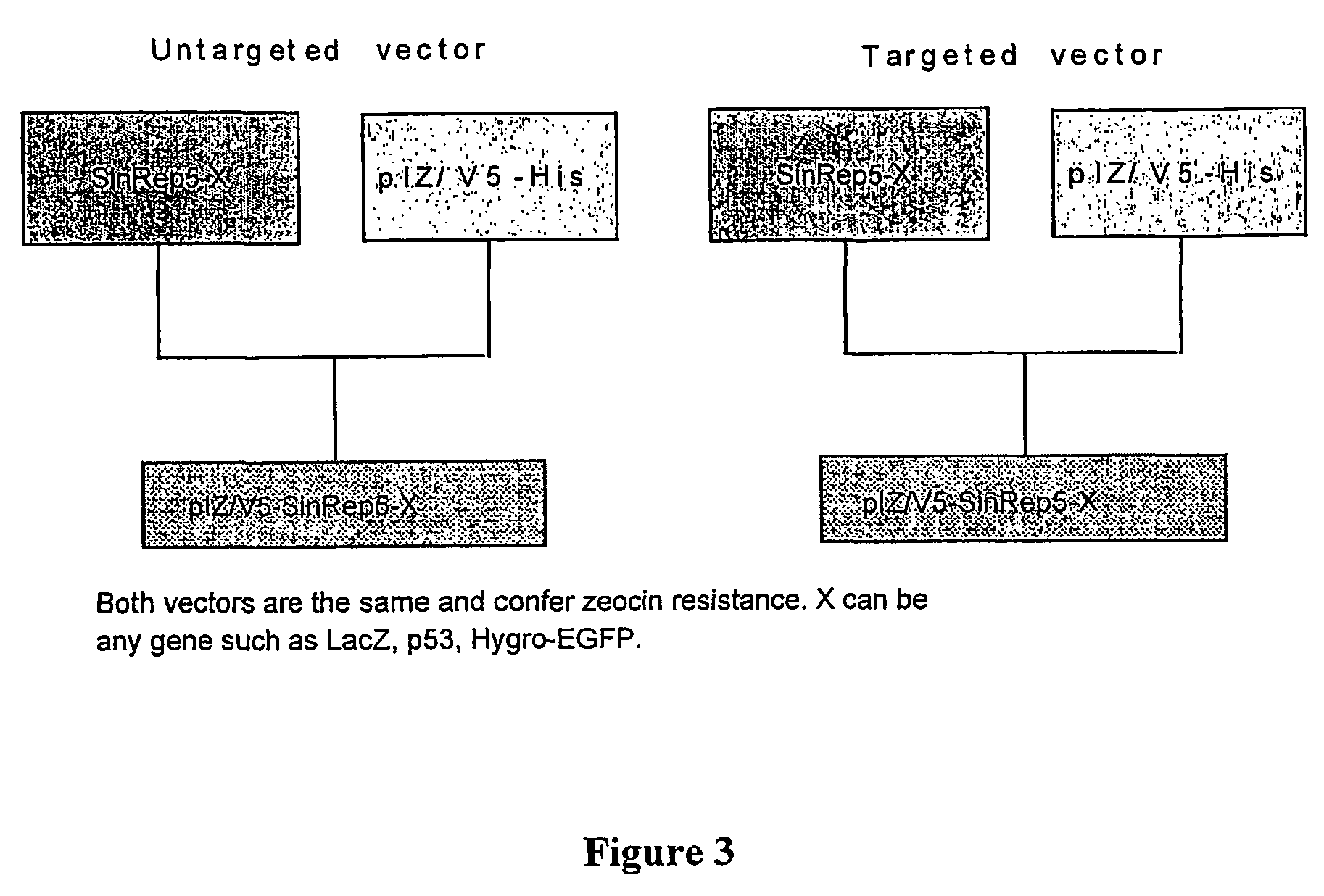Packaging cell lines for the continuous production of alphavirus vectors
a technology of alphavirus and cell line, applied in the field of packaging cell line, can solve the problems of germ line modification, low transfer efficiency, and all limitations, and achieve the effect of high efficiency
- Summary
- Abstract
- Description
- Claims
- Application Information
AI Technical Summary
Benefits of technology
Problems solved by technology
Method used
Image
Examples
example 1
Selection of Cells for the Generation of Recombinant Sindbis Vector Packaging Cell Line
[0082]Several insect cell lines (A. albopictus-derived C6 / 36 [ATCC Accession # CRL-1660], C7-10 cells (described in 73)], and u4.4 (described in 72) and Schneider's Drosophila cell line 2 (ATCC Accession # CRL-1963) were compared based on their ability to (i) resist the cytopathic effects of Sindbis virus infection, (ii) produce high viral titers, (iii) support viral budding, and (iv) provide a superinfection block (see Table 2). While extensive cytotoxicity was observed in the case of C7-10 cells, Sindbis cytotoxicity to C6 / 36 and u4.4 cells was minimal to zero (Table 2). In contrast to C6 / 36 and u4.4 cells, C7-10 cells also did not provide a superinfection block. Of the two more efficient mosquito cell lines, C6 / 36 showed the highest peak titers and budding of virus was clear, where as u4.4 appeared not to support virus budding (Table 2). Various additional considerations, such as the extent of ...
example 2
Generation of C6 / 36-Derived Packaging Cell Line Producing Untargeted Recombinant Sindbis Vectors Interacting With High-Affinity Laminin Receptor Components
Materials and Methods
[0084]Vector Design. For generating the C6 / 36 packaging cell line, pIB / V5-His / DHBB construct was produced by cloning BamHI / XhoI 4415 bp-long Sindbis DHBB fragment encoding structural genes, capsid, E3, E2, 6K, and E1, into the BamHI / XhoI site of pIZ / V5-His vector (see FIG. 12 for the plasmid map). pIZ / V5-His vector carries a selectable marker for blasticidin S and is specifically designed to express gene sequences in insect cells (i.e., it contains the OpIE2 promoter [Orgyia pseudotsugata immediate early 2-promoter], which provides high-level constitutive expression of the gene of interest in insect cells). The 11169 bp-long AseI fragment encoding Sindbis replicase, β-galactosidase reporter gene and the subgenomic promoter was excised from the SinRep5 / LacZ plasmid (Invitrogen), blunt-ended using T4DNA polymera...
example 3
Comparison of the In Vivo Efficacy of Recombinant Sindbis Vector Preparations Produced by Mammalian and Mosquito Cell Lines
Materials and Methods
[0094]Cell lines and plasmids. A Sindbis vector-producing C6 / 36 packaging cell line was generated and used as described in Example 2, above. Baby hamster kidney (BHK-21, ATCC Accession No. CCL-10) cells were obtained from the American Type Culture Collection (Manassas, Va.) and maintained in minimum essential media (Alpha-MEM, JRH Bioscience, Lenexa, Kans.) supplemented with 5% fetal bovine serum (FBS, BRL-GIBCO, Grand Island, N.Y.).
[0095]FIGS. 1-5 show-schematic representation of the Sindbis virus-derived expression and helper vectors. A Sindbis virus-based expression vector SinRep / LacZ (Bredenbeek et al., J Virol, 1993, 67: 6439-6446, Invitrogen Co.) contains the packaging signal, nsp1-4 for replicating the RNA transcript, the promoter for subgenomic transcription, and the LacZ gene. A helper plasmid DH-BB which contains the structural gen...
PUM
| Property | Measurement | Unit |
|---|---|---|
| thick | aaaaa | aaaaa |
| apoptosis resistance properties | aaaaa | aaaaa |
| resistance | aaaaa | aaaaa |
Abstract
Description
Claims
Application Information
 Login to View More
Login to View More - R&D
- Intellectual Property
- Life Sciences
- Materials
- Tech Scout
- Unparalleled Data Quality
- Higher Quality Content
- 60% Fewer Hallucinations
Browse by: Latest US Patents, China's latest patents, Technical Efficacy Thesaurus, Application Domain, Technology Topic, Popular Technical Reports.
© 2025 PatSnap. All rights reserved.Legal|Privacy policy|Modern Slavery Act Transparency Statement|Sitemap|About US| Contact US: help@patsnap.com



